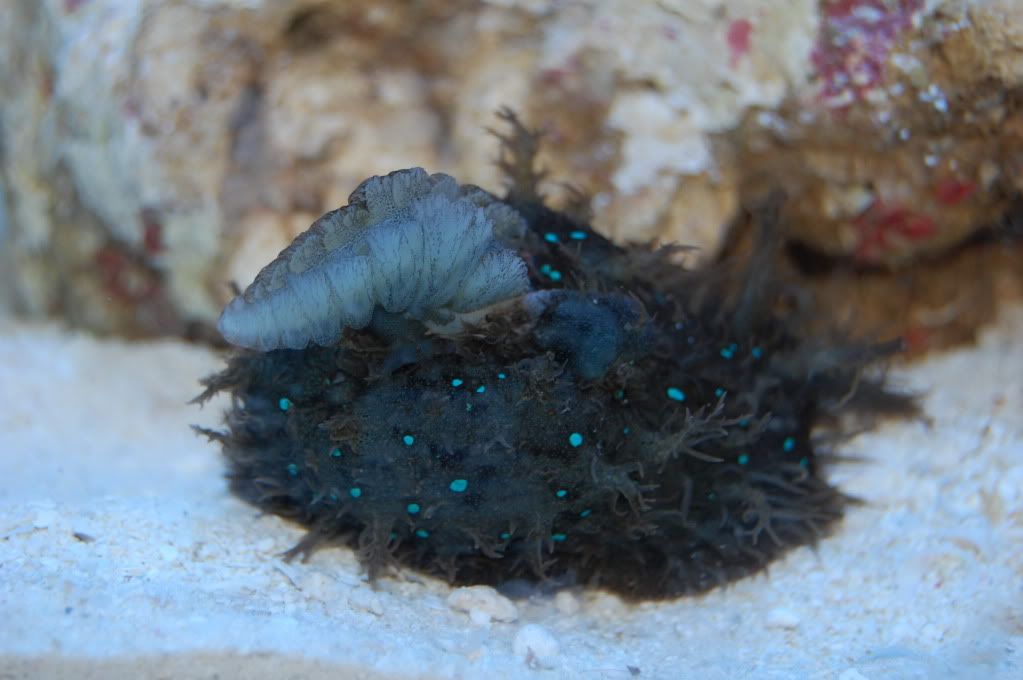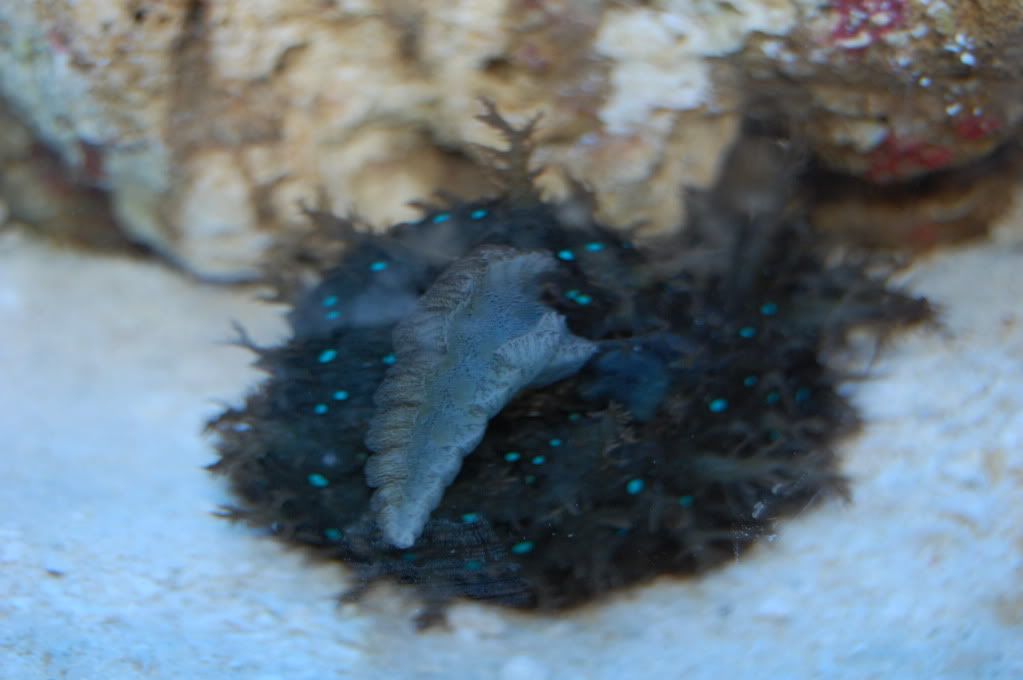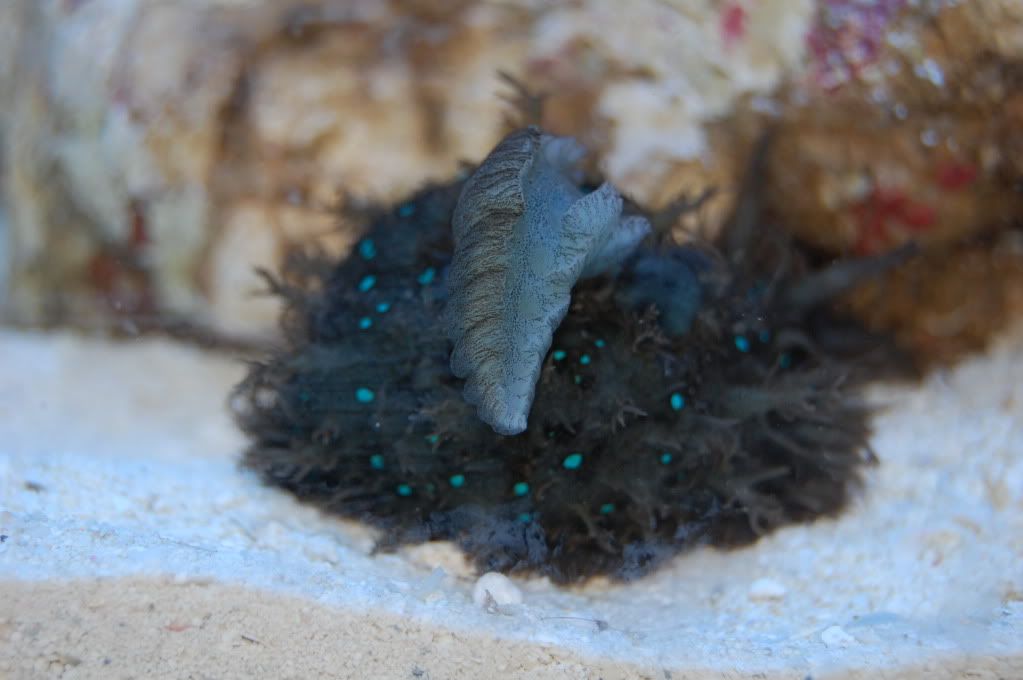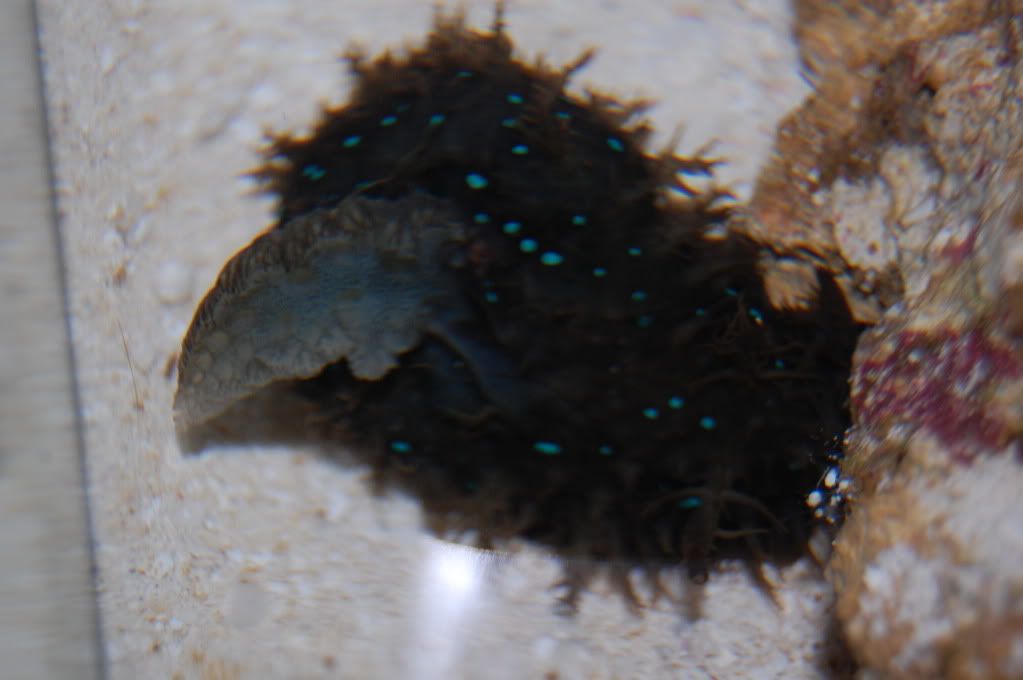Lengthy, but I found this online about their reproduction cycle
The larval biology of Bursatella leachii had previously been poorly studied, largely due to lack of success at rearing specimens in the laboratory (Henry 1952, Bebbington 1969). More recently, research findings by Paige (1988) have provided more detail on larval and postlarval development. This work is summarized here.
Under laboratory culture conditions at 25°C, animals hatch out as planktotrophic larvae approximately a week after egg masses have been laid. Newly hatched veligers lack eyes and possess a pair of sensory statocysts at the base of the foot. Individuals are negatively geotropic and they maintain themselves in the water column by swimming using a well-developed velum.
Growth of the planktonic larvae after hatching is rapid. Veligers attain maximum size approximately 15 days after hatching, and metamorphic competency is reached at 19 days posthatch. Paige (1988) notes that this is the shortest known larval duration for aplysiids possessing planktonic larvae.
Competent B. leachii metamorphose to take up a juvenile existence on the species of cyanobacteria that they will utilize as food, such as Microcoleus lyngbyaceus (now Lyngbya majuscula). Individuals that are competent to metamorphose are capable of delaying settlement for as much as 2.5 months until a suitable settlement substratum (i.e., blue-green algae from the Family Oscillatoriaceae) is encountered.
Upon settlement, an individual will attach to the substratum via mucus threads and retract into the shell to metamorphose. The process takes 1-2 days. Within a day of metamorphosis, postlarvae are seen crawling across the substratum ingesting food with a radula that is already well developed.
Postlarval growth is rapid. The shell stops growing when individuals reach 2.5-3 mm length, and between 15-20 days post-settlement the vestigial shell is discarded. By this time, the juvenile begins to resemble the adult in appearance, including the presence of rudiments along the body that will become the fleshy papillae. At this time, the juvenile also has the ability to discharge a small cloud of ink if irritated (Paige 1988).



















